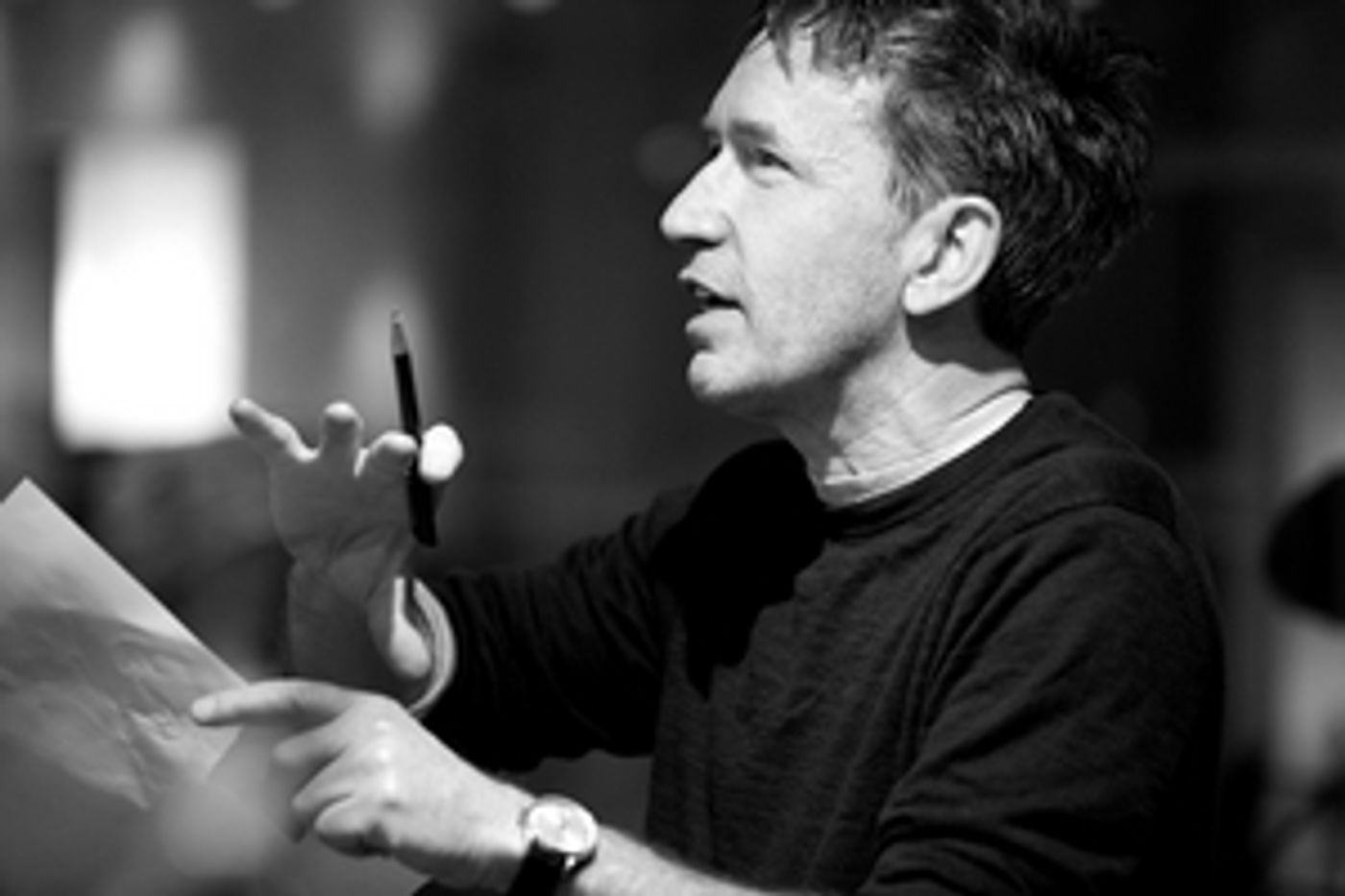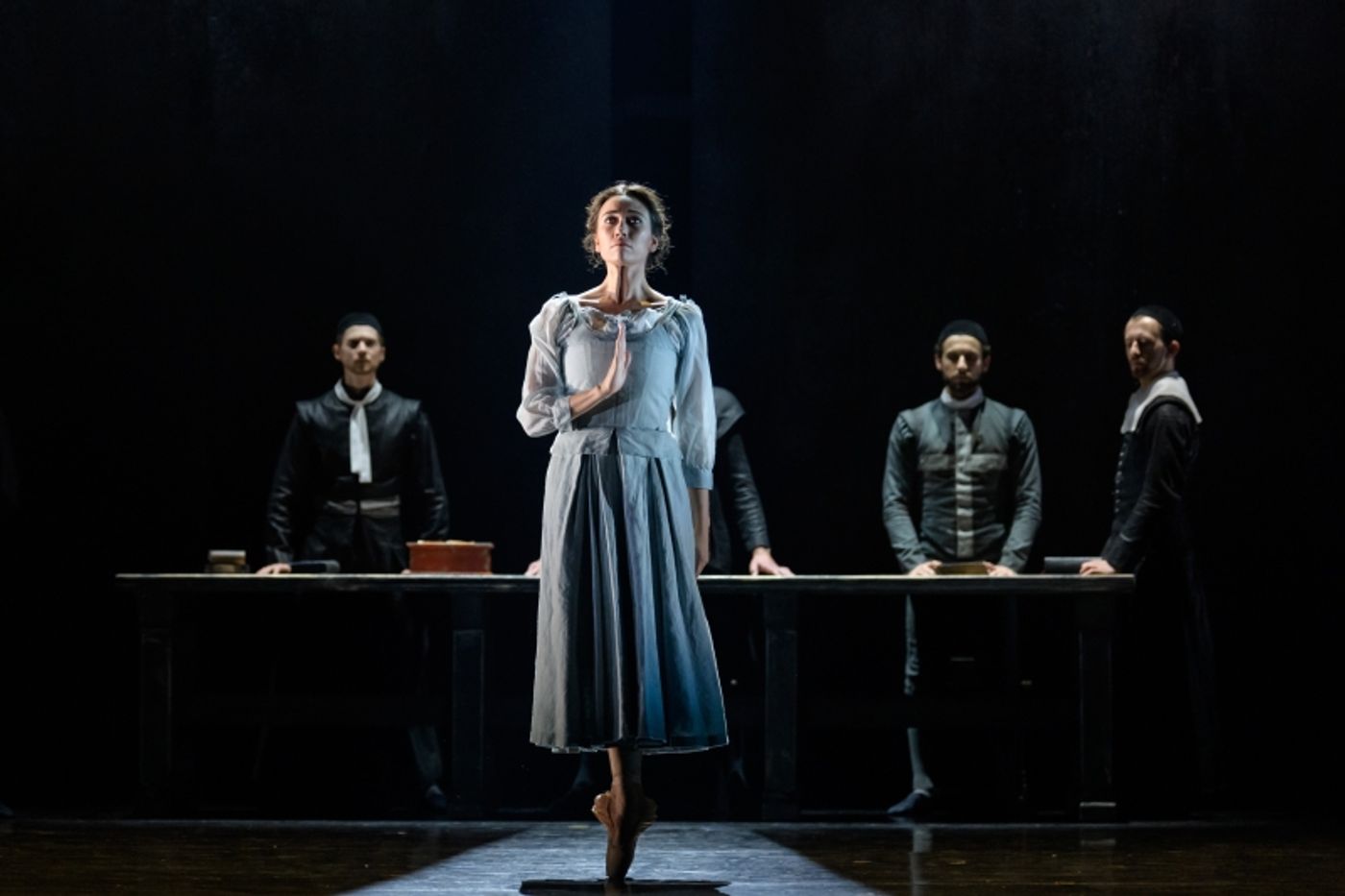Interview: Theatre Life with Peter Salem
The multi- talented composer on how he brought Arthur Miller's The Crucible musically to the stage for Scottish Ballet and more.

Today’s subject Peter Salem is currently living his theatre life as the composer of Scottish Ballet’s production of The Crucible. The show runs now through May 28th at Kennedy Center in the Eisenhower Theater.
Apart from writing soundtracks for TV dramas such as the hugely popular BBC series Call the Midwife, Peter Salem is increasingly creating works for contemporary ballet. His first full-length ballet score was for Scottish Ballet’s A Streetcar Named Desire followed by scores for Camino Real (Atlanta Ballet (choreographed by The Crucible’s Helen Pickett), Broken Wings (English National Ballet), Frida (Danish National Ballet), The Little Prince (BalletX), and Dona Peron (Ballet Hispanico).
Peter also provided music for Helen’s dance project Home Studies, her dance film The Air Before Me and composed the music for Desire which Pickett created for American Ballet Theatre in 2021.
Peter Salem’s is a highly talented composer who is able to set even the most impossible pieces of source material to music. The Crucible definitely falls into that category.
Grab some seats for Scottish Ballet’s The Crucible at Kennedy Center and see how Peter Salem’s music and the entire production bring Arthur Miller’s story to life in a form that you would never think of seeing it presented in.
Peter Salem is living his theatre life to the fullest and judging from what the rest of 2023 and beyond look like for him, I am sure there is more musical greatness to follow.
At what age did you get interested in music?
I can’t remember not being interested in or drawn to music - whether it was my dad’s classical recordings which he would play regularly at home or in the car, my brother’s collection of Stax soul records or, lying in bed as a young child, hearing him playing Chopin on the piano or a Bob Dylan album. Learning the piano early gave me a way in to creating my own music and I knew from then on that this is what I wanted to keep doing.
Where did you receive your musical training?
Piano lessons from the age of 4 from the lady next door(!), free instrumental tuition at school (violin), youth orchestras, York University studying music and specifically composition and then a year at the Guildhall School of Music and Drama in London.
What was your first professional job as a composer?
‘Musician in the Community’, a sort of composer-in-residence job based at the Arnolfini Art gallery in Bristol making music in local schools and community centers. This then led to writing music for productions at the Bristol Old Vic theatre which became my route to composition as a full time occupation.

Scottish Ballet's production of The Crucible.
Photo by Jane Hobson.
Arthur Miller’s play The Crucible falls into the category of being a perfectly written play that doesn’t need any help. When you were approached about turning this play into a ballet, what were your first thoughts in terms of how to approach the story musically?
My first thoughts were that it was simultaneously a crazy idea and an exciting challenge! It is a very word-based play - the girls dancing in the forest and Proctor’s affair are all ‘reported’ rather than seen - the dialogue is quite dry and spare with all the emotion lying between the lines, often seething below the surface. We all felt that if this was going to work as a ballet the play would have to be turned inside out with the raw emotion exposed and scenes such as the forest dance and the affair played out. The music could then heighten the now more tangible brutality, hatred, suspicion and division on the one hand and the love, tolerance and reconciliation on the other which lie at the core of the play.
.jpg?format=auto&width=1400)
Photo by Andy Ross.
Can you please talk about how you decided on the instrumentation of the orchestra and overall musical style for The Crucible?
I knew I wanted to reference music of the period without making it a ‘period- piece’. I toyed with the idea of basing it around a viol consort but felt in the end that a conventional but stylistically ‘informed’ string ensemble would be more flexible and have greater expressive range. I wanted to go for a darker string ensemble than usual because I felt this would serve the drama better - so 3 violas, 3 cellos, 2 basses and only 2 violins. I wanted an ensemble which could express the two extremes within the play which I mentioned above, at one extreme un-pitched percussion the sound of violence, intolerance, and inhumanity (the ultimate expression of which is the gavel - the sound of the death sentence - a pitch-less percussive sound) and at the other end strings and upper wind the sound of love, reconciliation, humanity, and tolerance. Brass, bassoons, drums and electronic percussion (including a pitch-shifted and time-stretched ‘wing-flap’ - we had always thought of the Men of God as a menacing flock of birds. . ) are power, oppression and dogma. I wanted to reference the talismanic sounds which the New England communities clung to as protection against what they saw as the dangerous, ‘wild’, world around them (nature, the indigenous people) and amongst them (sexual desire, dancing) which were the sounds of psalm tunes and church bells. I also knew that I wanted the sound of a pure girl’s voice singing a psalm tune as the clearest contrast between the way this devout community saw itself and the turmoil and division beneath the surface which would culminate in a girl’s scream. Bird imagery is important in the play and a critical part of the score are the sound effects of birds, rustling leaves and horses’ hooves. Nature and chaos are always just a hair’s breadth away. All the instruments are miked, allowing for the use of reverb and amplification and the orchestration includes 2 electronic keyboards and electronic sample pads.
Can you talk a little bit about your process for composing? How long does it take from first sketches to final production?
Once the choreographer and dramaturg have created a treatment providing a structural outline and some of the detail of the ballet scene by scene, I start to write the music. In this way it is a little like composing the score for a film which does not yet exist. I may not see a step of choreography until the first day of rehearsal only a few weeks before the premiere! First, I like to identify the sound world of the piece and decide if I will reference any musical styles because of the period or place in which the ballet is set. Then I look at the treatment scene by scene and try to visualize the drama. Once I feel I have the musical ideas for a scene I send a mock-up to the choreographer hoping they will be able to ‘see’ the scene from the music. They may not see it in the way I intended but if it corresponds in some way to their conception of the scene and better still inspires them choreographically then I can move on. With narrative ballet I find it is very important to send an accurate idea of how the music will sound to the choreographer, so I have never thought it useful to send a piano version.
The sounds themselves and even the amount of reverb or a sound effect have a psychological and dramatic impact which is crucial to the storytelling. If rehearsals are in more than one block it’s great to get a chance to see the choreography and re-work material to video from rehearsal. If not I have to hope it will all work and deal with structural changes the choreographer may make to the piece, make adjustments where I think necessary and get those changes into the score and parts in the few weeks before opening. I would say a full-length ballet (90-100 mins) would take around 9 months to 1 year from initial ideas to delivery of parts and score, keyboard programming and sound effects.
Most of your work is based in ballet, film, and TV. You have scored two productions for London’s National Theatre as well. If the opportunity presented itself for you to write a musical for the stage, would you accept the challenge and if yes, what subject would you like the musical to be about?
I’ve always been fascinated by the idea of musical theatre. But the book needs to be good! Something about the power that comes from controlling what ‘truth’ is or something about displacement . . . current concerns!
What does the rest of 2023 hold in store for you workwise?
I am currently working with Helen Pickett on a ballet based on Madame Bovary for The National Ballet of Canada which will open in November of this year. This will be followed by work on another full length piece for Dutch National Ballet opening in Spring 2025. Frida - a full-length ballet based on the life of artist Frida Kahlo- is being revived by Dutch National Ballet in Los Angeles in July.
Special Thanks to Kennedy Center's en pointe Senior Press Representative Brittany Laeger for her assistance in coordinating this interview.
Theatre Life logo designed by Kevin Laughon.
Videos


.gif)